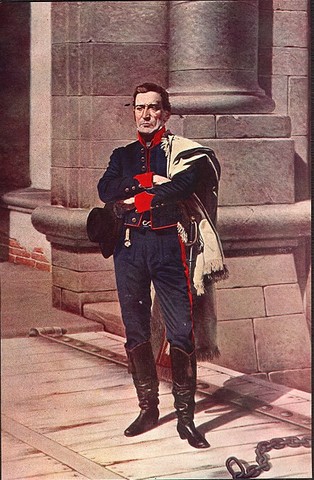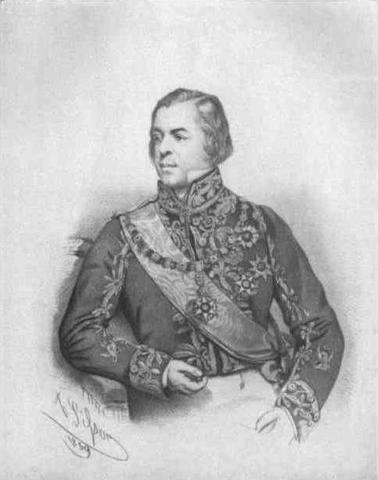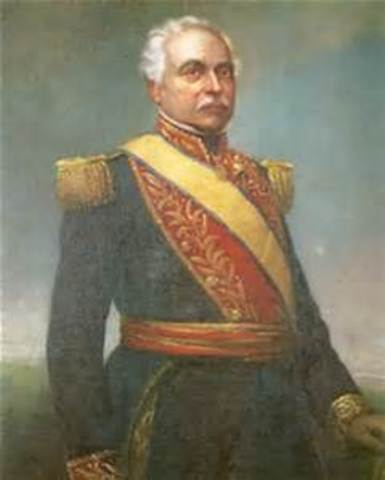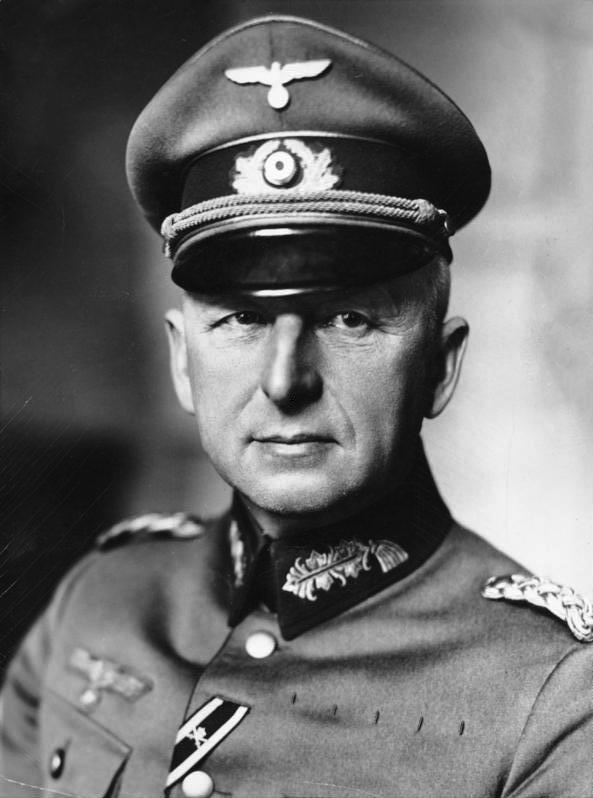Post Colonization South American History Lecture
Mar 25, 2016 2:43:48 GMT
saltin, Napoleon Bonaparte, and 3 more like this
Post by General William T. Sherman on Mar 25, 2016 2:43:48 GMT
This lecture will talk about the events and history of South America after Spanish and Portuguese colonization. We'll start from 1825 on, mirroring the independence of Brazil, the last South American nation to formally achieve independence from its rulers.
Before we begin, it is good to explain the situation prior to the independence of the states of South America. After the American Revolution, the ideals of liberty may have spread to France, but the ideals of independence also spread throughout the Western Hemisphere. The second nation to declare independence from its former rulers was Haiti, which was a former French colony until the French Revolution began. Once the French Revolution began, the slaves in French Hispaniola revolted, inspired by the ideals of liberty and freedom. They, with the aid of the British and Spanish, succeeded in liberating Haiti.

Haitian slaves revolting against their French captors.
After Haiti gained independence, there were multiple attempted revolutions in Spanish colonies, but none succeeded until the French invaded Spain in 1810. Once France invaded Spain, many nationalists saw this as their chance to rebel. These rebellions were successful for two reasons: One:Spain was preoccupied in trying to defend its independence from the French and Two:The South Americans had great generals such as Simon Bolivar. Bolivar and his forces first secured the Northern Spanish colonies of Venezuela, Colombia and Ecuador, then moved south to the main Spanish stronghold in Peru. Argentina was secured with fairly little bloodshed, and most Argentines ended up fighting in Chile, Bolivia and Peru. Once Peru was finally secured, Bolivia fell soon after. Chile was the last Spanish colony to win its independence, doing so in 1818.
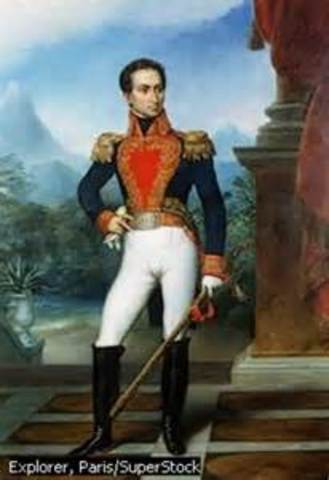
Simon Bolivar sporting his casual look.
By 1818, all of Spain's former colonies in South America had been liberated, but Brazil still remained as a Portuguese colony. When Portugal was invaded and occupied by France in 1807, the Portuguese King Pedro IV and his family fled to Brazil. When he was in Brazil, Pedro IV loved living there and wanted to stay there even when the Napoleonic Wars were over and Portugal was liberated. Eventually, however Pedro IV was forced to return to Portugal following the Liberal Revolution of 1820 in Portugal. He did leave his son, Pedro I, to reign over the colony of Brazil. Two years after Pedro IV left for Portugal, many in the Portuguese colonial administration in Brazil saw that Spanish colonies were gaining independence. As a result, many pressured Pedro I to declare independence from Portugal and become the new head of state of Brazil. Pedro I was drawn to declaring independence from his father, as currently Pedro was only the prince of a second rate European country, while he could become King of a potentially strong Brazil if he did declare independence. Ultimately, Pedro I agreed and declare independence and became the first Emperor of the Empire of Brazil. Brazil was officially recognized as independent from Portugal by most countries by 1825.
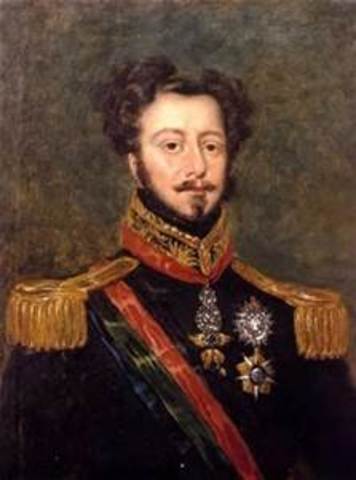
Dom Pedro I
Clearly, by looking at Brazil's historical background compared to the rest of South America, there are multiple apparent differences. One: The most obvious one is that Portugal colonized Brazil while the rest of S.America was colonized by Spain. Two: Brazil was the only monarchy/empire in S.America. All the other states in S.America declared independence as republics, and none ever had a ruling monarch. Brazil is the exception to this, as Pedro I was a monarch related to the Portuguese Braganza dynastic line. And finally three: The Spanish colonies fought for their independence, while Brazil's independence was fairly free of bloodshed. There was never a Brazilian war of Independence against the Portuguese, unlike the rest of South America.
All of this information is the historical background to South America's history after colonization. From this background, South American history will be forged.
WHERE TO FIND CERTAIN LECTURES:
Introduction-Page 1
Cisplatine War-Page 1
Gran Colombia-Page 1
Peru-Bolivia and the War of the Confederation-Page 1
Uruguayan Civil War-Page 2
Platine War-Page 2
War of the Triple Alliance-Page 2
Slavery in Brazil-Page 2
Dom Pedro II-Page 3
War of the Pacific-Page 4
Argentine Civil War and the Conquest of the Desert-Page 4
Diego Portales-Page 4
Foreign Interventions in South America-Page 5
Immigration to South America-Page 5
South America in WWI-Page 5
Military Strongmen in South America-Page 5
Before we begin, it is good to explain the situation prior to the independence of the states of South America. After the American Revolution, the ideals of liberty may have spread to France, but the ideals of independence also spread throughout the Western Hemisphere. The second nation to declare independence from its former rulers was Haiti, which was a former French colony until the French Revolution began. Once the French Revolution began, the slaves in French Hispaniola revolted, inspired by the ideals of liberty and freedom. They, with the aid of the British and Spanish, succeeded in liberating Haiti.

Haitian slaves revolting against their French captors.
After Haiti gained independence, there were multiple attempted revolutions in Spanish colonies, but none succeeded until the French invaded Spain in 1810. Once France invaded Spain, many nationalists saw this as their chance to rebel. These rebellions were successful for two reasons: One:Spain was preoccupied in trying to defend its independence from the French and Two:The South Americans had great generals such as Simon Bolivar. Bolivar and his forces first secured the Northern Spanish colonies of Venezuela, Colombia and Ecuador, then moved south to the main Spanish stronghold in Peru. Argentina was secured with fairly little bloodshed, and most Argentines ended up fighting in Chile, Bolivia and Peru. Once Peru was finally secured, Bolivia fell soon after. Chile was the last Spanish colony to win its independence, doing so in 1818.

Simon Bolivar sporting his casual look.
By 1818, all of Spain's former colonies in South America had been liberated, but Brazil still remained as a Portuguese colony. When Portugal was invaded and occupied by France in 1807, the Portuguese King Pedro IV and his family fled to Brazil. When he was in Brazil, Pedro IV loved living there and wanted to stay there even when the Napoleonic Wars were over and Portugal was liberated. Eventually, however Pedro IV was forced to return to Portugal following the Liberal Revolution of 1820 in Portugal. He did leave his son, Pedro I, to reign over the colony of Brazil. Two years after Pedro IV left for Portugal, many in the Portuguese colonial administration in Brazil saw that Spanish colonies were gaining independence. As a result, many pressured Pedro I to declare independence from Portugal and become the new head of state of Brazil. Pedro I was drawn to declaring independence from his father, as currently Pedro was only the prince of a second rate European country, while he could become King of a potentially strong Brazil if he did declare independence. Ultimately, Pedro I agreed and declare independence and became the first Emperor of the Empire of Brazil. Brazil was officially recognized as independent from Portugal by most countries by 1825.

Dom Pedro I
Clearly, by looking at Brazil's historical background compared to the rest of South America, there are multiple apparent differences. One: The most obvious one is that Portugal colonized Brazil while the rest of S.America was colonized by Spain. Two: Brazil was the only monarchy/empire in S.America. All the other states in S.America declared independence as republics, and none ever had a ruling monarch. Brazil is the exception to this, as Pedro I was a monarch related to the Portuguese Braganza dynastic line. And finally three: The Spanish colonies fought for their independence, while Brazil's independence was fairly free of bloodshed. There was never a Brazilian war of Independence against the Portuguese, unlike the rest of South America.
All of this information is the historical background to South America's history after colonization. From this background, South American history will be forged.
WHERE TO FIND CERTAIN LECTURES:
Introduction-Page 1
Cisplatine War-Page 1
Gran Colombia-Page 1
Peru-Bolivia and the War of the Confederation-Page 1
Uruguayan Civil War-Page 2
Platine War-Page 2
War of the Triple Alliance-Page 2
Slavery in Brazil-Page 2
Dom Pedro II-Page 3
War of the Pacific-Page 4
Argentine Civil War and the Conquest of the Desert-Page 4
Diego Portales-Page 4
Foreign Interventions in South America-Page 5
Immigration to South America-Page 5
South America in WWI-Page 5
Military Strongmen in South America-Page 5




